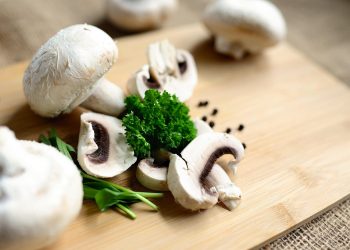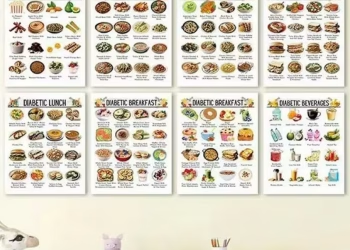Embarking on a sugar-free journey can be a game-changer for weight loss and overall health. It’s not about deprivation; it’s about making informed choices and discovering a world of delicious and nutritious alternatives. This guide provides a plethora of sugar-free meal ideas to help you achieve your weight loss goals while enjoying every bite.
Understanding the Sugar-Free Approach
Before diving into meal ideas, let’s clarify what “sugar-free” truly means. It generally refers to eliminating added sugars, including refined sugar (sucrose), high-fructose corn syrup, and artificial sweeteners in some cases. Natural sugars found in fruits and some vegetables are often permitted in moderation, as they come packaged with fiber, vitamins, and minerals. The key is to focus on whole, unprocessed foods.
Why go sugar-free for weight loss? Added sugars contribute empty calories, leading to weight gain and related health issues. Cutting them out can stabilize blood sugar levels, reduce cravings, and promote fat burning.
Breakfast: Fueling Your Day the Sugar-Free Way
Breakfast is the most important meal, and a sugar-free one sets the tone for a successful day. Here are some ideas:
Avocado Toast with Everything Bagel Seasoning
A classic for a reason! Mash half an avocado on whole-wheat toast and sprinkle with everything bagel seasoning for added flavor. Avocados are packed with healthy fats and fiber, keeping you full and satisfied.
- Benefits: Healthy fats, fiber, sustained energy.
- Tip: Add a sprinkle of red pepper flakes for a little kick.
Overnight Oats with Berries and Nuts
Prepare this the night before for a quick and easy breakfast. Combine rolled oats, unsweetened almond milk, chia seeds, and a handful of berries in a jar. Let it sit overnight in the refrigerator. Top with chopped nuts before serving.
- Benefits: High in fiber, easy to digest, packed with antioxidants.
- Tip: Add a scoop of unsweetened protein powder for extra protein.
Sugar-Free Scrambled Eggs with Spinach and Mushrooms
A protein-packed breakfast that will keep you full for hours. Sauté spinach and mushrooms in olive oil, then add scrambled eggs. Season with salt, pepper, and herbs of your choice.
- Benefits: High in protein, low in carbs, nutrient-rich.
- Tip: Add a sprinkle of nutritional yeast for a cheesy flavor without the dairy.
Greek Yogurt with Seeds and a Few Berries
Choose plain, unsweetened Greek yogurt, which is high in protein. Top with a tablespoon of chia seeds, flax seeds, or hemp seeds for added fiber and omega-3 fatty acids. Add a small handful of berries for natural sweetness and antioxidants.
- Benefits: High in protein, probiotics for gut health, good source of fiber and healthy fats.
- Tip: Cinnamon adds a warm, comforting flavor without sugar.
Lunch: Sugar-Free Midday Meals
Lunch should be a balanced meal that provides sustained energy to power you through the afternoon. Avoid sugary drinks and processed snacks.
Chicken Salad Lettuce Wraps
Mix shredded chicken breast with avocado oil mayonnaise, celery, onion, and seasonings. Serve in crisp lettuce cups for a light and refreshing lunch.
- Benefits: High in protein, low in carbs, customizable.
- Tip: Add chopped grapes or apple for a touch of natural sweetness (in moderation).
Salmon Salad with Mixed Greens
Flake cooked salmon and toss it with a variety of mixed greens, cucumber, tomatoes, and a lemon vinaigrette dressing (made with olive oil, lemon juice, and herbs).
- Benefits: Rich in omega-3 fatty acids, antioxidants, and healthy fats.
- Tip: Add some chopped avocado for extra creaminess and healthy fats.
Leftover Dinner
One of the easiest ways to stay on track is to pack leftovers from dinner for lunch. This saves time and ensures you have a healthy, sugar-free option readily available.
- Benefits: Convenient, cost-effective, and healthy.
- Tip: Always pack your lunch the night before to avoid making unhealthy choices in the morning.
Lentil Soup
Lentil soup is packed with protein and fiber, making it a hearty and satisfying lunch option. Look for recipes that don’t include added sugars.
- Benefits: High in protein and fiber, filling, and budget-friendly.
- Tip: Make a big batch on the weekend for easy lunches throughout the week.
Dinner: Sugar-Free Evening Delights
Dinner should be a well-rounded meal with lean protein, healthy fats, and plenty of vegetables. Choose cooking methods like baking, grilling, or steaming to minimize added fats.
Baked Salmon with Roasted Asparagus and Sweet Potato
Season salmon fillets with herbs and spices and bake until cooked through. Roast asparagus and sweet potato with olive oil, salt, and pepper. Sweet potatoes, though naturally sweet, are a complex carbohydrate that provides sustained energy.
- Benefits: Rich in omega-3 fatty acids, vitamins, and fiber.
- Tip: Squeeze fresh lemon juice over the salmon for added flavor.
Chicken Stir-Fry with Brown Rice
Stir-fry chicken breast with your favorite vegetables (broccoli, peppers, onions) in a sugar-free soy sauce alternative (e.g., coconut aminos). Serve over brown rice.
- Benefits: High in protein, customizable, and packed with nutrients.
- Tip: Use a variety of colorful vegetables for maximum nutritional benefits.
Turkey Meatloaf with Mashed Cauliflower
Make a healthy turkey meatloaf using lean ground turkey, vegetables, and spices. Replace mashed potatoes with mashed cauliflower for a low-carb alternative.
- Benefits: High in protein, low in carbs, and satisfying.
- Tip: Add a sugar-free tomato sauce topping for added flavor.
Shrimp Scampi with Zucchini Noodles
Sauté shrimp in garlic, olive oil, and lemon juice. Serve over zucchini noodles (zoodles) for a light and flavorful meal.
- Benefits: Low in carbs, high in protein, and quick to prepare.
- Tip: Add a sprinkle of red pepper flakes for a little heat.
Snacks: Sugar-Free Bites to Curb Cravings
Snacks are essential for keeping your metabolism revved up and preventing overeating at meals. Choose sugar-free options that are high in protein and fiber.
Handful of Almonds
A small handful of almonds (about 23) provides healthy fats, protein, and fiber.
- Benefits: Healthy fats, protein, and fiber.
- Tip: Choose unsalted almonds to avoid excess sodium.
Hard-Boiled Egg
Hard-boiled eggs are a great source of protein and easy to prepare in advance.
- Benefits: High in protein, convenient, and affordable.
- Tip: Sprinkle with salt and pepper or paprika for added flavor.
Celery Sticks with Peanut Butter
Spread natural peanut butter (with no added sugar) on celery sticks for a satisfying snack.
- Benefits: Protein, fiber, and healthy fats.
- Tip: Look for peanut butter with only peanuts and salt as ingredients.
Small Serving of Berries
A small serving of berries (e.g., blueberries, raspberries, strawberries) provides antioxidants and natural sweetness.
- Benefits: Antioxidants, vitamins, and fiber.
- Tip: Combine different types of berries for a variety of nutrients.
Tips for Success on a Sugar-Free Diet
Transitioning to a sugar-free diet can be challenging, but these tips will help you stay on track:
* Read Labels Carefully: Sugar can hide under many names, such as sucrose, glucose, fructose, and corn syrup.
* Plan Your Meals: Planning your meals in advance will help you avoid impulse decisions that can derail your progress.
* Stay Hydrated: Drink plenty of water to help curb cravings and keep you feeling full.
* Find Sugar-Free Alternatives: Experiment with sugar-free sweeteners like stevia or monk fruit in moderation.
* Be Patient: It takes time for your body to adjust to a sugar-free diet. Don’t get discouraged if you experience cravings at first.
Conclusion
Adopting a sugar-free diet can be a powerful tool for weight loss and improved health. By focusing on whole, unprocessed foods and following these meal ideas, you can enjoy delicious and satisfying meals while achieving your goals. Remember to be patient with yourself and celebrate your progress along the way. A sugar-free lifestyle is not about deprivation; it’s about nourishing your body with the nutrients it needs to thrive.
Frequently Asked Questions (FAQs)
Here are some frequently asked questions about sugar-free diets for weight loss:
Is fruit allowed on a sugar-free diet?
Yes, fruit is generally allowed in moderation. Focus on lower-sugar fruits like berries, green apples, and grapefruit. Be mindful of portion sizes, as fruit still contains natural sugars.
Are artificial sweeteners okay?
The use of artificial sweeteners is a personal choice. Some people find them helpful for curbing cravings, while others prefer to avoid them. Research on the long-term effects of artificial sweeteners is ongoing, so it’s best to use them sparingly or opt for natural sugar-free alternatives like stevia or monk fruit.
How long does it take to see results on a sugar-free diet?
The timeline for seeing results varies depending on individual factors such as metabolism, activity level, and overall diet. However, many people start to notice improvements in their energy levels, weight, and cravings within a few weeks of adopting a sugar-free diet.
What are some common side effects of going sugar-free?
Some people may experience withdrawal symptoms such as headaches, fatigue, and irritability when they first cut out sugar. These symptoms are usually temporary and subside within a few days. Staying hydrated and eating regular, balanced meals can help minimize these effects.
Is a sugar-free diet safe for everyone?
A sugar-free diet is generally safe for most people. However, individuals with certain medical conditions, such as diabetes or kidney disease, should consult with their doctor or a registered dietitian before making significant dietary changes. Pregnant or breastfeeding women should also seek professional guidance.
Can I still eat out on a sugar-free diet?
Yes, you can still eat out on a sugar-free diet. Choose restaurants that offer grilled or baked protein options, plenty of vegetables, and sugar-free dressings or sauces. Be sure to ask your server about the ingredients in the dishes you’re considering.












